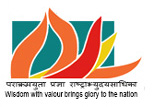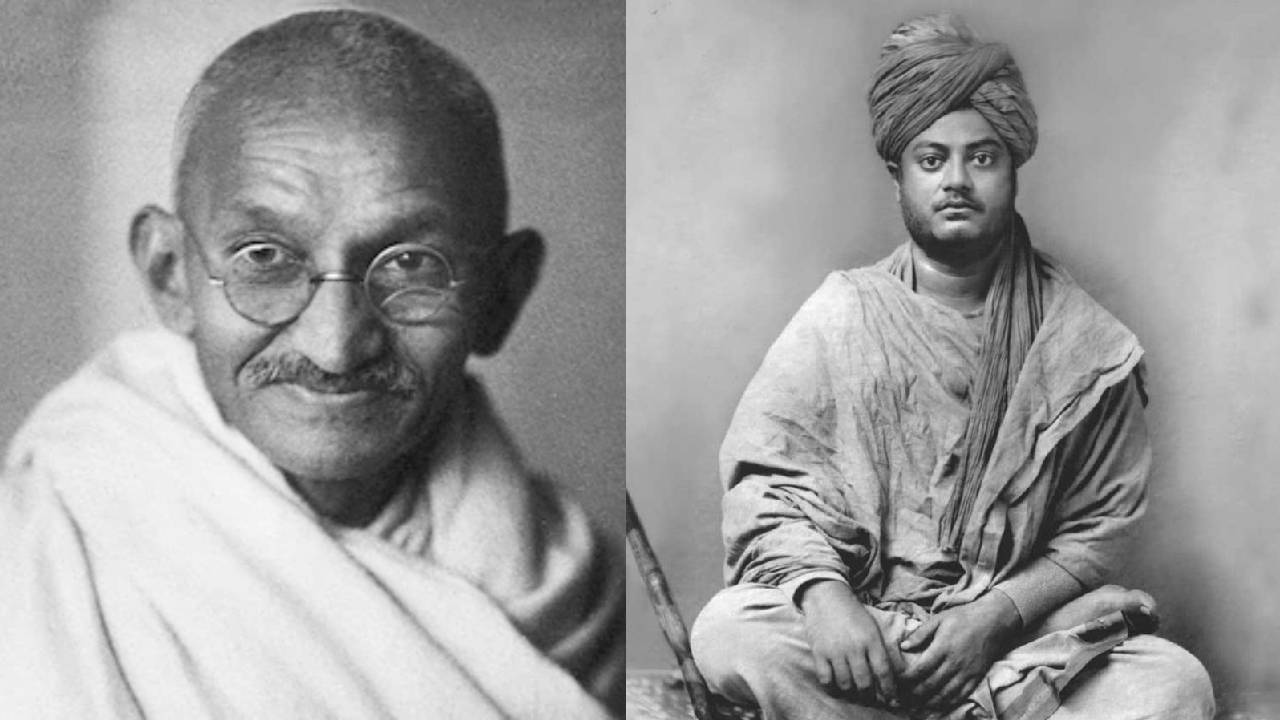Swami Vivekananda is one of the few historical figures whose influence has been intensely impactful within a relatively short period. Despite living for less than 40 years, the lasting legacy of his ideas and teachings continues to inspire and expand, shaping future generations. In the last decade of the 19th century, Swamiji revolutionized the freedom movement. As the 20th century dawned, Indian youth found an icon to look up to—a person whose life and words continue to inspire, serving as a guiding light for them. His influence is evident from the number of people who were inspired by him and became actively involved in the movement, either directly or indirectly. Anyone who read his teachings began to develop a deep love for India, took pride in their country’s values, and felt a strong urge to work for the welfare of Mother India.
Swami Vivekananda’s influence was deep, extending beyond those who personally met him or heard him speak. His writings and teachings left a permanent mark on anyone who encountered him, shaping their perspectives on India’s potential for greatness. This impact was not limited to his immediate followers; even eminent figures such as Mahatma Gandhi, who never had the opportunity to meet Swamiji despite several attempts, were significantly influenced by his vision. Gandhi, having read Swamiji’s literature, frequently cited his teachings throughout his life. He also visited the Ramakrishna Mission, which Swamiji had founded, and its various branches. Gandhi held Swamiji in the highest regard, often placing him among the most revered figures in Indian history, alongside luminaries such as the Lord Buddha, Lord Mahavira, Shankar Devji, Ramanuja ji, Kabir ji, Guru Nanak Devji, Chaitanya ji, Ramakrishna Paramhansa ji, and Dayananda Saraswati ji.[i] To learn about Mahatma Gandhi, his collected works, spanning 98 volumes, serve as the greatest source. It is from these very works that we gain insight into the influence of Swami Vivekananda on Gandhiji. Throughout several volumes, we encounter letters, lectures, and instances where Gandhiji discusses, quotes, and mentions the name of Swami Vivekananda.
Exploring Two Moments When Swami Vivekananda and Mahatma Gandhi Could Have Met
In just a span of four years, from 1898 to 1901, there were two instances when Swamiji and Gandhiji could have met. The first occurred in 1898, when Gandhiji invited Swamiji to visit South Africa. The second was in 1901, when Gandhiji visited Belur Math but could not find the Swami there. However, both encounters did not materialize, and in 1902, Swamiji attained Mahasamadhi, leaving no further opportunity for their meeting.
In 1898, Gandhiji stated his wish for Swami Vivekananda to visit South Africa and share his spiritual teachings. This is documented in a letter he wrote to his friend, Mr. B. N. Bhajekar, in February 1898. Gandhiji writes,
“A religious preacher is very badly wanted here but he must tower above all the priests here. He must be absolutely pure minded and unselfish & must not require money to support him…………Could not Swami[1] himself be induced to pay us a visit? I shall do everything I can to make his mission a success. He can work both among Indians & Europeans. I take it he moves freely among the Indians the highest as well as the lowest. He is sure to do one thing if he comes. He will electrify the Europeans by his eloquence & possibly hypnotize [sic] them into liking the ‘Coolies’ in spite of themselves. ………….. I very rarely write unreservedly but I thought this was one of those occasions when it is allowed to & even obligatory on a man to throw off his reserve. You may place this letter before the Swami if you so wish it.”[ii] It remains uncertain whether Mahatma Gandhi’s letter was ever received by Swami Vivekananda; however, it is evident that the Swami did not visit South Africa.
At the beginning of the 20th century, Gandhiji returned to India from South Africa and spent some time in Calcutta. During this period (1901), he intended to meet Swami Vivekananda and even visited Belur Math with that aim. However, Swamiji was unwell and not present at the Math at that time, preventing their meeting. In The Story of My Experiments with Truth, Gandhi writes: “Having seen enough of the Brahmo Samaj, it was impossible to be satisfied without seeing Swami Vivekanand. So with great enthusiasm I went to Belur Math, mostly, or maybe all the way, on foot. I loved the sequestered site of the Math. I was disappointed and sorry to be told that the Swami was at his Calcutta house, lying ill, and could not be seen”.[iii]
Swami Vivekananda’s Writings and Their Impact on Mahatma Gandhi”
The complete works of Swami Vivekananda, compiled in nine volumes, serve as a critical source for accessing his original lectures, letters, sayings, and utterances. Swamiji’s literature has had a profound impact, enhancing the self-confidence of individuals across various fields, shaping their lives, and providing enduring clarity to millions of people even in contemporary times.
During his first visit to the West (1893-96), Swamiji wrote his pioneering work, Rajyoga. This book was introduced to Gandhiji while he was in South Africa[iv] and remained a significant part of his reading list throughout his life[v]. In addition to Swamiji’s original writings, Gandhiji also read his biography written by Nobel laureate Romain Rolland. In 1932, Gandhiji mentioned in his writings that he was reading “The Life of Vivekananda”. [vi] He also referenced this in a letter to Kusum Desai, stating, “If you intend to write to Pyarelal, inform him that I am still reading Ramakrishna’s and Vivekananda’s books. I will send them over to Rameshwardas when I finish them.” [vii]
In addition to reading Swami Vivekananda’s writings himself, Gandhiji frequently recommended them to his friends in order to deepen their understanding of Indian philosophy and spirituality. In December 1934, during a conversation with Mars Chesley, Gandhiji specifically recommended Swamiji’s Rajayoga[viii]. Similarly, in a letter to Lawrence McKenner, who resided in California, on August 24, 1945, Gandhiji advised to read Swami Vivekananda’s works.[ix]
In 1921, Gandhiji acknowledged the impact of Swami Vivekananda’s writings on him during a lecture delivered at Belur Math, the headquarters of the Ramakrishna Mission. Gandhiji said,”I have gone through his works very thoroughly, and after having gone through them, the love that I had for my country became a thousand fold. I ask you, young men, not to go away empty-handed, without imbibing something of the spirit of the place where Swami Vivekananda lived and died”.[x]
The Significance of Sanskrit: Swami Vivekananda’s Vision and Gandhiji’s Call
Swami Vivekananda emphasized the significant role of the Sanskrit language in India’s national revival, a perspective articulated in his 1897 lecture, “The Future of India,” delivered in Madras (now Chennai). In this address, he argued that “Sanskrit words gives a prestige and a power and a strength to the race”.[xi] Decades later, during his visit to Tamil Nadu in 1946, Mahatma Gandhi referred to this speech by Swami Vivekananda and urged the people to learn Sanskrit, highlighting its cultural and intellectual value. According to the report of the program “Gandhiji also made a fervent appeal to Harijans and others to learn Hindustani along with the study of their mother tongue. He reminded them of the visit of Swami Vivekananda to Madras a few years back and the advice he had given them to study Sanskrit. Gandhiji hoped that some of the Harijans would aspire to become Sanskrit pundits”.[xii]
Gandhiji’s Multiple Visits to the Ramakrishna Mission, Founded by Swami Vivekananda in 1897
Following his return from South Africa, Gandhiji travelled extensively across India, during which he made numerous visits to various branches of the Ramakrishna Mission, including those in Vrindavan[xiii]and Rangoon, among others. He was particularly impressed by the environment and beauty of the Mission’s ashrams, to the extent that he recommended them to others. In a letter dated February 15, 1934, to K.M. Munshi, Gandhiji suggested to visit the Ramakrishna Mission centres in Almora and Ooty.[xiv]
In 1929, during his visit to the Ramakrishna Mission in Rangoon, Gandhiji shared his reverence for Swami Vivekananda and his Guru, Sri Ramakrishna Paramahamsa. He expressed his thoughts as follows: “My Sisters and Brothers, I thank the Ramakrishna Mission for the address they have so kindly presented to me.
I want to tell you something about Ramakrishna Paramahamsa and his mission. He has left for us a great work. I have faith in his mission and I would ask you to follow him. Wherever I go the followers of Ramakrishna invite me and I know their blessings are on my work. Ramakrishna Sevashrams (people’s service centres) and Hospitals are spread throughout India. There is no such place where their work is not being carried on a small or large scale. Hospitals are opened and the poor are given medicine and treatment…… When I remember Ramakrishna’s name I cannot forget Vivekananda. Sevashrams have been largely spread by Vivekananda’s activity and it was he who made his Master known throughout the world. I pray to God to increase such Sevashrams”.[xv]
It is crucial to recognize that, despite the extensive recognition and discourse surrounding Swami Vivekananda and Mahatma Gandhi, these particular aspects have often been overlooked. This issue is addressed in my book, “Influence of the Ramakrishna-Vivekananda Movement on Gandhi.” Therefore, the relationship between these two eminent figures in Indian history should serve as a catalyst for scholars, academicians, and researchers to adopt a more nuanced and holistic approach in their study and analysis of both individuals.
[1] Mahatma Gandhi is addressing Swami Vivekananda as Swami
[i] Gandhi, M. K. (1999).”CWMG” Volume Forty-six: (May 12, 1929 – Aug 31, 1929), P.221
[ii] Marie Louise Burke (1960). Swami Vivekananda in the West: New Discoveries – The World Teacher: Part Two, Published by Swami Ananyananda President, Advaita Ashram Mayavati, Pithoragarh, Himalayas P. 508-509
[iii] Gandhi, M. K., & Desai, M. (1976). An autobiography or the story of my experiments with truth. Ahmedabad: Navajivan. P .268
[iv] Gandhi, M. K., & Desai, M. (1976). An autobiography or the story of my experiments with truth. Ahmedabad: Navajivan. P. 297
[v] Gandhi, M. K. (1999).”CWMG” Volume Twenty-six: (Jan 24, 1922 – Dec 31, 1923), P.449
[vi] Gandhi, M. K. (1999).”CWMG” Volume Fifty-five: (Feb 10, 1932 – Jun 15, 1932), P.467
[vii] Gandhi, M. K. (1999). “CWMG” Volume Fifty-five: (Feb 10, 1932 – Jun 15, 1932), P.443-444
[viii]Gandhi, M. K. (1999). “CWMG” Volume Sixty-five: (Sep 16, 1934 – Dec 15, 1934), P.461
[ix] Gandhi, M. K. (1999).”CWMG” Volume Eighty-seven: (May 29, 1945 – Aug 29, 1945), P.399
[x] Vivekananda, Swami (2019). My India: The India eternal [1st ed.] (Calcutta: Ramakrishna Mission Institute of Culture) P. 206
[xi] “CWSV” Volume 3/Lectures from Colombo to Almora/The Future of India P. 305
[xii] Gandhi, M. K. (1999).”CWMG” Volume Eighty-nine: (Dec 7, 1945 – Feb 24, 1946), P.89
[xiii] Gandhi, M. K. (1999). “CWMG” Volume Fifteen: (May 21, 1915 – Aug 31, 1917), P.100
[xiv]Gandhi, M. K. (1999). “CWMG” Volume Sixty-three: (Jan 18, 1934 – May 19, 1934), P.158
[xv] Gandhi, M. K. (1999).”CWMG” Volume Forty-five: (Feb 4, 1929 – May 11, 1929), P.235
(The views expressed are the author's own and do not necessarily reflect the position of the organisation)


